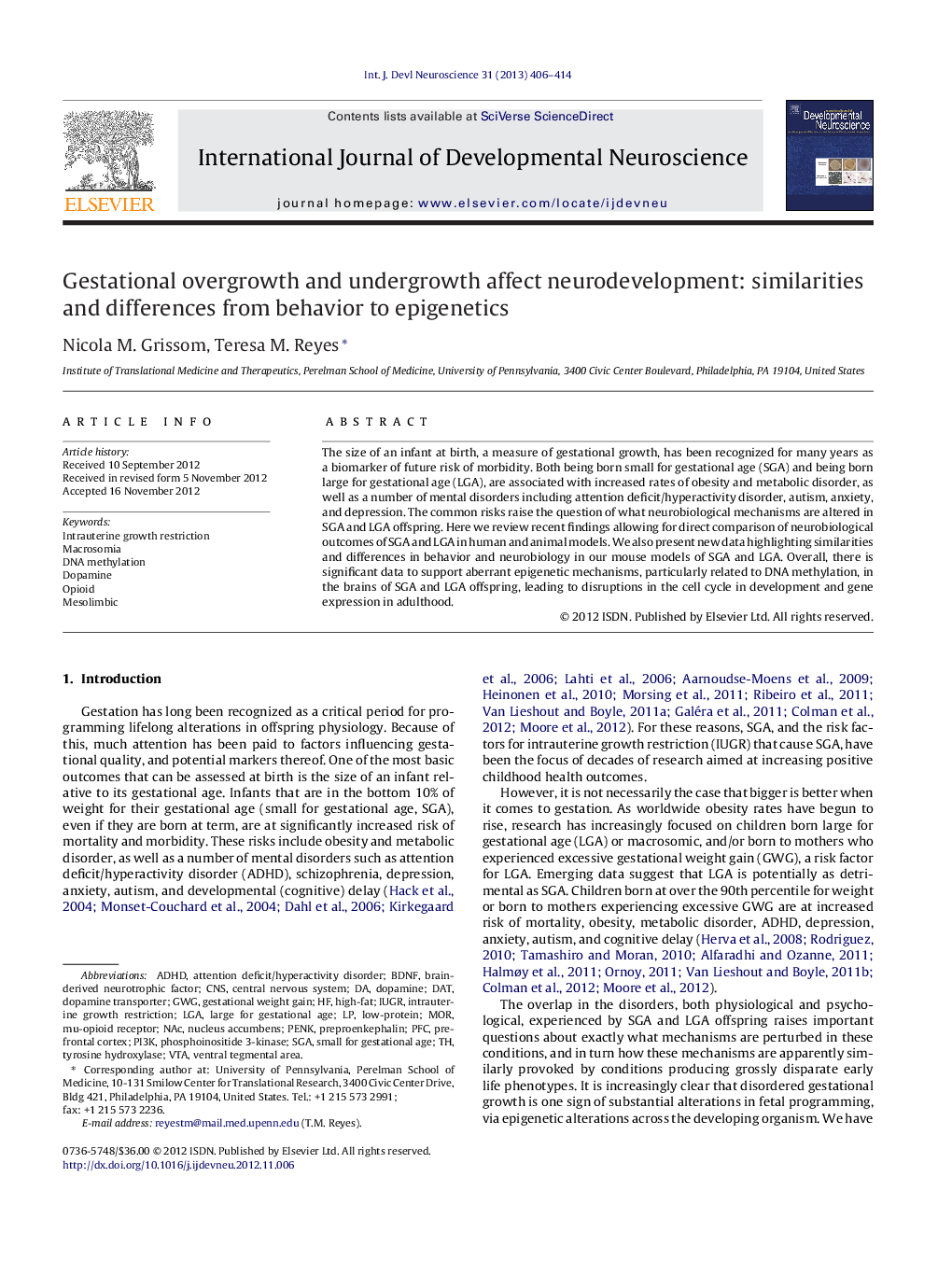| Article ID | Journal | Published Year | Pages | File Type |
|---|---|---|---|---|
| 2786143 | International Journal of Developmental Neuroscience | 2013 | 9 Pages |
The size of an infant at birth, a measure of gestational growth, has been recognized for many years as a biomarker of future risk of morbidity. Both being born small for gestational age (SGA) and being born large for gestational age (LGA), are associated with increased rates of obesity and metabolic disorder, as well as a number of mental disorders including attention deficit/hyperactivity disorder, autism, anxiety, and depression. The common risks raise the question of what neurobiological mechanisms are altered in SGA and LGA offspring. Here we review recent findings allowing for direct comparison of neurobiological outcomes of SGA and LGA in human and animal models. We also present new data highlighting similarities and differences in behavior and neurobiology in our mouse models of SGA and LGA. Overall, there is significant data to support aberrant epigenetic mechanisms, particularly related to DNA methylation, in the brains of SGA and LGA offspring, leading to disruptions in the cell cycle in development and gene expression in adulthood.
► Offspring born small for gestational age and large for gestational age share common risks for a number of mental disorders. ► The developing brain, particularly the hypothalamus and mesocorticolimbic system, is particularly vulnerable to gestational growth disorders. ► DNA methylation processes are implicated from multiple lines of evidence as a common mechanism of neurobiological dysfunction in gestational growth disorders.
